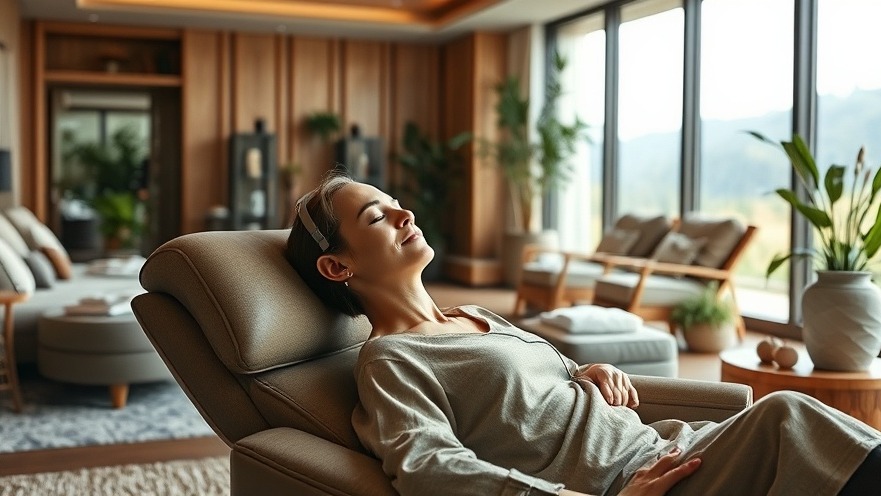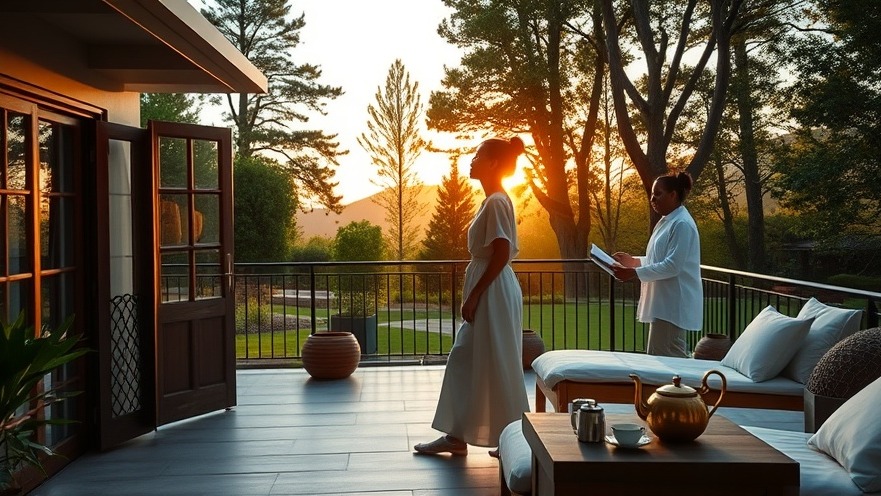
Why Spas Are Turning to Brain Health for Deeper Transformation
Imagine stepping into a spa where your treatment begins not with a massage table but with a headset of tiny sensors.
A practitioner smiles, gently fitting the cap onto your head, and within minutes your brain activity is on screen in colorful waves and maps.
Instead of just easing sore shoulders, the session ahead is designed to sharpen your focus, steady your emotions, and help you sleep better.
This isn’t science fiction. Across the world, spas and wellness centers are embracing brain health and cognitive wellness programs. From qEEG brain mapping to neurofeedback training, these services are giving guests a chance to experience tangible improvements in clarity, resilience, and performance.
As one practitioner explained, “We’re not just soothing stress anymore—we’re retraining the nervous system for clarity and strength.”
That shift is changing what guests expect from a spa visit and what spa leaders can offer in an increasingly competitive wellness market.
From Science Labs to Spa Sanctuaries: How Brain Wellness Entered Hospitality
The story of brain wellness in spas starts in neuroscience labs and clinical settings. Techniques like neurofeedback—which uses EEG sensors to give the brain real-time feedback on its activity—were once limited to researchers and therapists.
qEEG mapping, or “brain mapping,” helped scientists identify patterns linked to focus, sleep, or mood regulation.
Over time, performance coaches and mental-health professionals saw how these tools could support athletes, executives, and patients with stress or attention issues. That opened the door for a broader audience.
Today, the idea has traveled far beyond hospitals. Luxury resorts like Kamalaya in Thailand or Six Senses properties worldwide now include brain optimization programs in their wellness journeys.
Urban “biohacking gyms” such as Upgrade Labs bring the same tools to city dwellers looking for sharper focus or better recovery.
“Huge fan of Peak Brain… life-changing results… they teach you quickly how to set up at home.” — Reddit user reviewing Peak Brain Institute
This mix of clinical science and hospitality design makes brain wellness approachable, even inviting, to guests who might have been intimidated by medical settings.

Milestones That Moved Brain Health From Niche to Mainstream
Several key shifts have fueled the rise of brain health in spas:
Post-pandemic stress: After years of disrupted routines and heightened anxiety, guests sought more than temporary relief. They wanted measurable ways to regain balance.
Hospitality adoption: Resorts like Six Senses began offering structured cognitive programs that combine technology with traditional spa services. Vogue even called brain health “the next big thing in wellness tourism.”
Consumer wearables: The popularity of devices like the Muse meditation headband or Oura Ring helped normalize brain and body tracking, making EEG caps feel less foreign.
Evidence and ethics: At the same time, researchers and practitioners called for clarity. Some modalities, like TMS, are FDA-cleared for clinical conditions. Others, like neurofeedback, show promising results but still face questions about consistency.
“Neurofeedback… sends back visual or auditory ‘feedback’ when the brain produces desired brainwave changes.” — Dr. Andrew Hill, Peak Brain Institute
Together, these milestones show how brain health moved from niche science to mainstream spa offering in less than a decade.
The New Playbook: How Spas Are Personalizing and Innovating Brain Care
Personalization with qEEG
Personalization is the new luxury. By using qEEG brain mapping, spas can create a baseline “snapshot” of a guest’s brain activity. This map guides the choice of training protocols and helps track progress.
Guests love the before-and-after visuals—proof that their sessions are doing more than just “helping them feel relaxed.”
Stacked Protocols That Amplify Results
Instead of relying on one tool, many programs stack multiple methods:
EEG neurofeedback for brainwave regulation.
HRV biofeedback for calming the nervous system.
Light, sound, or breathwork to anchor the results.
This holistic layering creates deeper impact and blends seamlessly with existing spa practices like yoga or meditation.
The Spa Experience Advantage
Unlike clinics, spas excel at environment and ritual. Imagine a brain training room softened with warm lighting, sound-dampened walls, and tea service afterward.
These touches transform intimidating technology into a nurturing journey.
Measurable Metrics Without Overwhelm
Tracking progress is critical but must be simple. Guests resonate with easy dashboards showing sleep scores, stress reduction, or “brainwave balance.” Short consultations help translate the science into everyday benefits like better sleep or calmer mornings.

What Sets Brain-Focused Spas Apart From the Rest
What sets standout brain wellness programs apart isn’t just the tech—it’s the philosophy.
Ethics first: The best spas are clear about what brain training can and cannot do. They avoid medical claims and focus on wellness outcomes like focus, resilience, and relaxation.
Education as part of treatment: Mini-workshops and coaching empower guests to apply skills at home, extending results beyond their stay.
Nature and neuro together: Programs often include outdoor activities like guided hikes or breathwork in natural settings, amplifying neurofeedback’s calming effects.
Continuity after checkout: Some spas offer remote sessions or at-home kits, creating ongoing revenue streams and keeping guests connected long term.
“The wellness programs and classes are outstanding… led by highly skilled professionals.” — TripAdvisor review of Kamalaya
These differentiators elevate brain health offerings from a novelty to a core pillar of modern spa identity.
Practical Steps for Spa Leaders Ready to Launch Brain Wellness Programs
1. Define Your Scope: Decide whether you’ll offer wellness-grade neurofeedback and HRV training, or if you’ll partner with clinical providers for regulated treatments like TMS.
2. Build a Journey, Not Just a Session: Design a 6–8 week starter program: assessment, 10–20 sessions, re-map, and a clear take-home plan. This structure sets clear expectations.
3. Train Your Team: Reception staff need a simple script to explain the value. Practitioners should follow clear protocols and checklists. A lead trainer should review maps and progress with guests.
4. Market With Care: Highlight outcomes like improved sleep, sharper focus, and reduced stress, but avoid overpromising or using clinical language without medical oversight.
5. Stack With Lifestyle: Pair brain training with sleep coaching, yoga, mindfulness, and contrast therapies to enhance results and build a full-body narrative.
6. Celebrate Small Wins: Share progress reports at key milestones. Guests feel encouraged when they can see improvements on paper and feel them in their daily lives.
7. Pilot Before Scaling: Test programs with staff or loyal members first. Gather testimonials and refine the experience before rolling it out widely.
These steps not only protect your spa’s reputation but also create a smoother path to guest trust and long-term loyalty.

A Future Beyond Relaxation: Inspiring Guests to Think, Feel, and Live Better
The rise of brain health and cognitive wellness programs reminds us that spas are no longer just sanctuaries for pampering—they’re becoming hubs of transformation.
The key lessons are clear: personalization matters, education builds trust, and ethical practice sets the strongest foundation.
When combined, these elements give guests more than a fleeting escape; they offer measurable change in clarity, resilience, and wellbeing.
For spa leaders, the opportunity lies in designing journeys that start with assessment, build momentum through consistent training, and close with celebrations of progress.
Whether you choose to introduce qEEG brain mapping, neurofeedback, or simple HRV biofeedback, the common thread is this: you’re helping guests unlock the best version of themselves.
As one guest reflected after trying neurofeedback, “Before, I felt foggy. Now my mind is sharper, and I finally sleep through the night.” Stories like this highlight the potential impact when spas embrace innovation with heart and responsibility.
So here’s the invitation: imagine your spa not only easing stress, but guiding guests into a new chapter of mental clarity.
Start small, learn as you go, and let your commitment to both science and care set you apart. The future of wellness is here, and it’s ready to be written—one brainwave at a time.
Explore deeper analysis on spa business trends, treatment evolution, and market shifts in the Industry Trends category, or visit Spa Front News for more industry intelligence and wellness inspiration.
—
Authored by the Spa Front News Editorial Team — a publication of DSA Digital Media, dedicated to elevating the spa industry with expert insights, treatment breakthroughs, and destination features for spa owners, managers, and wellness leaders.
 Add Row
Add Row  Add
Add 




Write A Comment